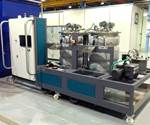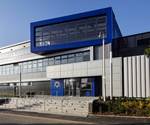Reaction Engines Ltd. joins National Composites Centre
The company plans to use the partnership to accelerate its research into ceramic matrix composites for commercial space components.
The National Composites Centre (NCC; Bristol, U.K.) has announced that Reaction Engines Ltd. (Abingdon, U.K.) has joined the NCC’s membership network. Reaction Engines is developing a hypersonic propulsion system for aircraft and spacecraft, the Synergetic Air-Breathing Rocket Engine (SABRE).
The partnership will focus on accelerating Reaction Engines’ research in ceramic matrix composites (CMC), materials that the company says will play a critical role in the development of components for the commercial space market.
“The NCC’s partnership with Reaction Engines reflects our ambition to enable every hi-tech industry to access state-of-the-art composite manufacturing technology and technical specialists to accelerate their use of composites, “ says Richard Oldfield, CEO of the National Composites Centre. “We are looking forward to working with a team that share the NCC’s commitment and drive to turn research innovation into commercially viable components.”
“Reaction Engines has recently joined the National Composites Centre to accelerate its ceramic matrix composites research,” says Richard Varvill, chief technology officer of Reaction Engines. “This allows us to leverage NCC expertise and assist in the development of a UK supply chain leading to a supply of prototype components to meet the demands of the SABRE development program.”
Related Content
-
Otto Aviation launches Phantom 3500 business jet with all-composite airframe from Leonardo
Promising 60% less fuel burn and 90% less emissions using SAF, the super-laminar flow design with windowless fuselage will be built using RTM in Florida facility with certification slated for 2030.
-
Combining multifunctional thermoplastic composites, additive manufacturing for next-gen airframe structures
The DOMMINIO project combines AFP with 3D printed gyroid cores, embedded SHM sensors and smart materials for induction-driven disassembly of parts at end of life.
-
Low-cost, efficient CFRP anisogrid lattice structures
CIRA uses patented parallel winding, dry fiber, silicone tooling and resin infusion to cut labor for lightweight, heavily loaded space applications.
.jpg;width=70;height=70;mode=crop)


